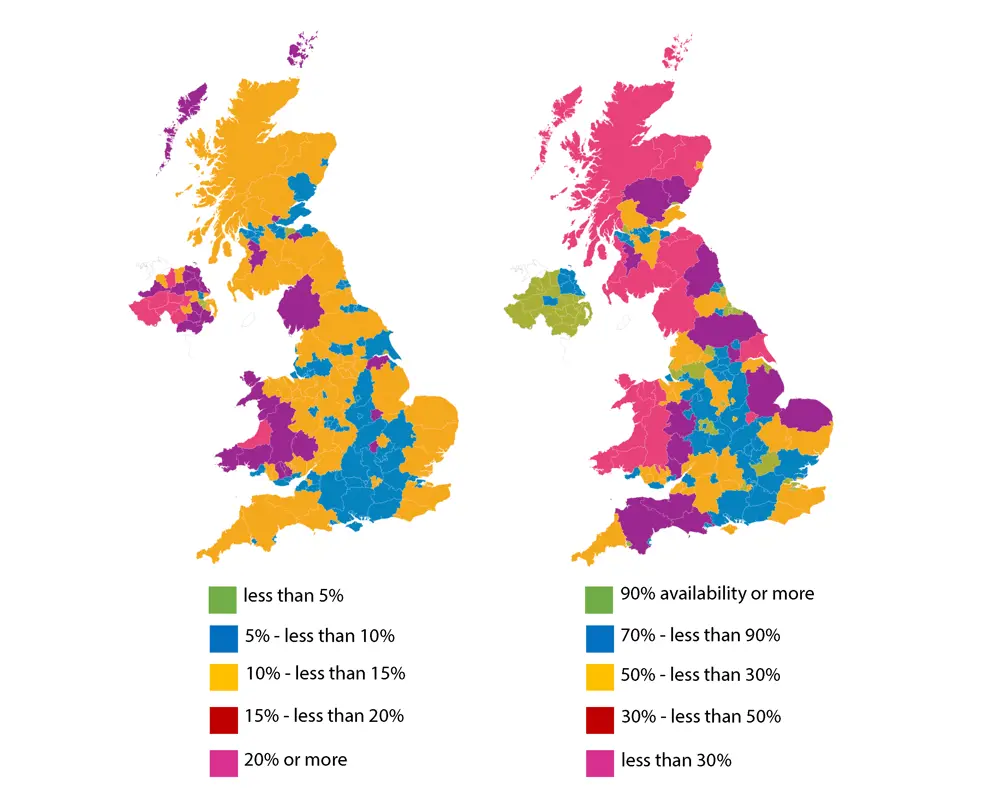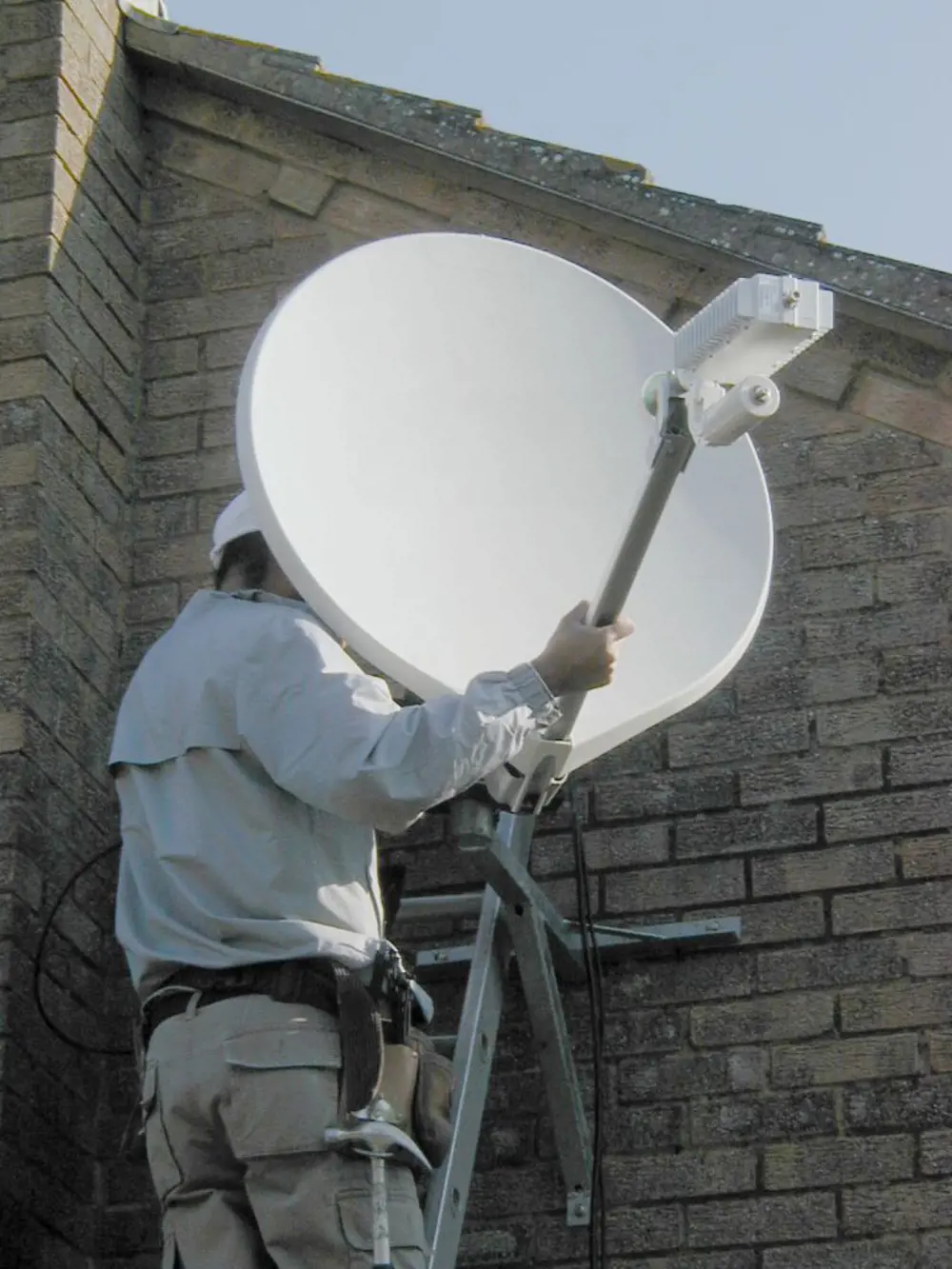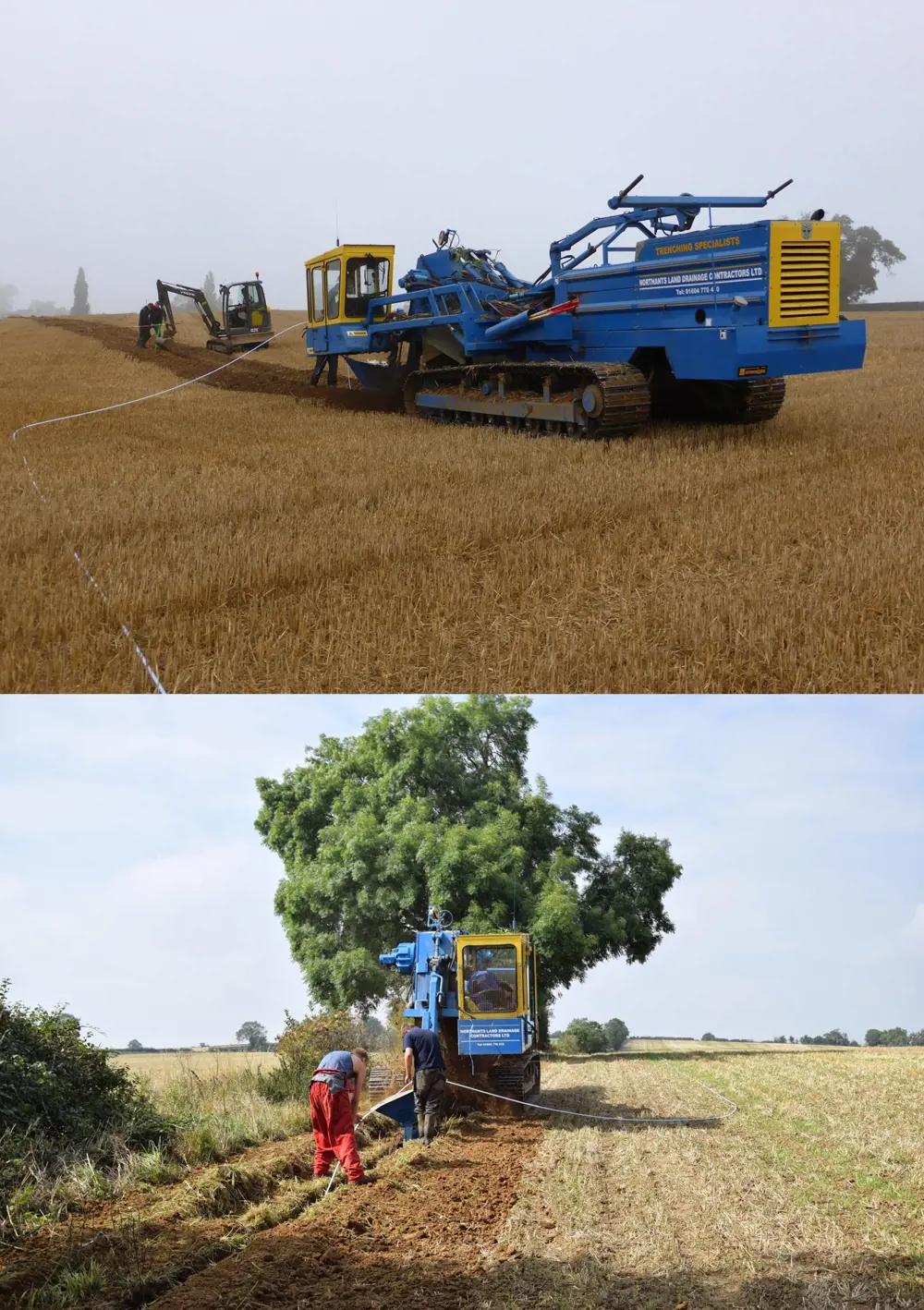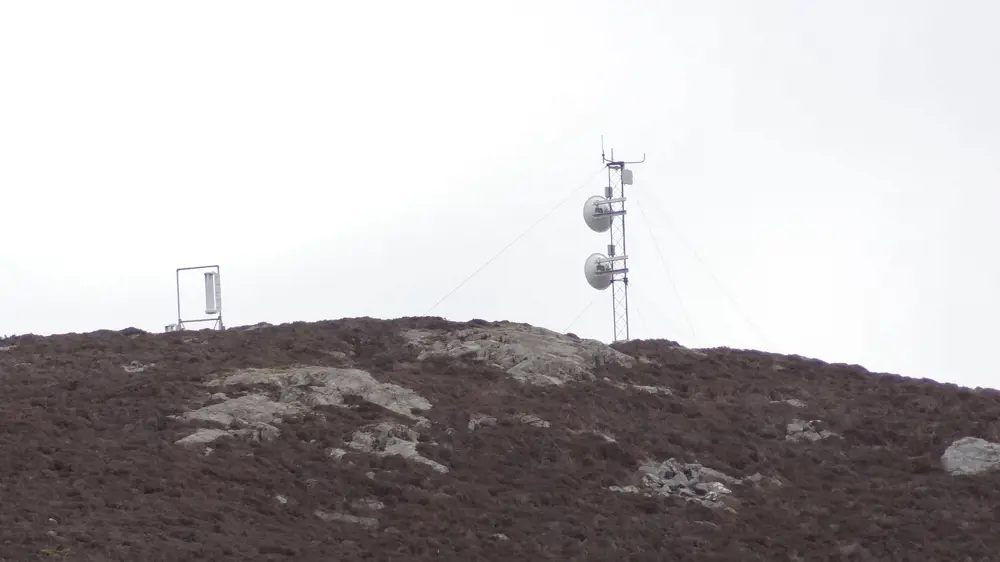
Broadband in the backwaters: rural Britain's fight for faster internet
ASDL Vs Fibre-Optic broadband
📡 Internet speeds, data transmission and distance dependence
ADSL
- ADSL (asymmetric digital subscriber line) can provide speeds up to 24 Mbps but the speed a customer receives depends on how far their home is located from an exchange, meaning speeds can be dramatically lower in rural areas.
- Data is transmitted along copper cables from a BT exchange to the home.
- With ADSL, electrons are pushed down a copper wire to carry information via an internet and phone connection through a socket on the wall at home.
- ADSL uses frequencies not used by a telephone call. A device called a splitter, or micro filter, separates the telephone line from the broadband and the digital signals received are decoded and recoded into useable information.
Fibre-Optic broadband
- One way of delivering superfast broadband is through fibre-optic cables to provide speeds of 30 Mbps to 1 Gbps.
- There are thousands of individual glass fibres as thin as a human hair in each cable, which carry data in the form of light photons instead of electrons.
- Each fibre is reflective on the inside so that light bounces off the inner walls to travel along the cable.
- Little light is absorbed by the glass, so that when pulses of light carrying data enter at one end, they undergo repeated total internal reflection to emerge at the other end, where the data is decoded into a usable form.
- Signals in optical fibres do not weaken over long distances as much as in copper cables.
Almost half of the homes in rural Britain are unable to get an internet connection of 10 Mbps (megabits per second) or above, arguably putting businesses at risk, increasing farming costs and driving young people away from the areas in which they grew up.
These slow internet speeds contribute to the UK lagging behind many other nations. According to a recent report by the European Commission (EC), high-speed broadband in Slovenia and Lithuania eclipses that across the UK. While the Netherlands and Malta both have at least 97% fast broadband coverage, Britain has 90%. Europe’s Digital Progress Report states that: “even though the UK performs very well in terms of fixed basic broadband coverage of rural areas, and [Broadband Delivery UK] programme actions already address the gap in the availability of superfast broadband between urban and rural areas, there is still an opportunity for additional effort in order to bridge the gap.”
Ofcom’s Communications Market Report says that 90% of premises across the country can receive next-generation broadband services. However, most of these are in urban areas and the situation in rural Britain may not improve fast. By 2020, around one million families living in remote locations with poor or non-existent broadband will be able to apply for an upgrade if they want it, but in the meantime some have taken matters into their own hands.

Territorial coverage of broadband connections of less than 2.2 Mbps in the UK (left). Territorial coverage of superfast broadband availability in the UK (right) © Professor John Farrington
Mind the speed gap
Government figures show that the average broadband speed in ‘sparse settings’, such as a rural hamlet, is just 5 Mbps compared to some cities at 27 Mbps. This is despite a programme by Broadband Delivery UK (BDUK), a part of the Department for Culture, Media and Sport that is aiming to deliver superfast broadband and better mobile connectivity across the UK, to extend superfast broadband into areas not currently catered for by the commercial market. This means that while superfast broadband – defined as better than 30 Mbps by Ofcom – is available to 24 million homes, or 83% of UK premises, the majority of those without access are in rural areas.
According to Ofcom, around 2.4 million homes and small businesses in the UK are unable to receive broadband speeds above 10 Mbps, with 1.5 million of these premises in rural areas. This prevalence of ‘not spots’ comes at a time when demand for data is growing, with the average monthly data usage per residential connection rising from 58 GB (gigabyte) in 2014 to 82 GB in 2015.
According to Anne-Marie Oostveen, Research Fellow at the Oxford Internet Institute, University of Oxford, there are four reasons for slow rural broadband speeds: connection speeds, latency, contention ratios and reliability.
Broadband is delivered through a combination of direct fibre connections and wireless. Using the existing copper network designed for telephones is cheaper in the short term but does present some challenges, especially for more widely spaced rural areas. In some this is impossible because homes can be far away from the exchange or street cabinet so the signal degrades and speeds drop. The quality, type and maintenance of cable can also have an effect on speed, but generally the people worst affected are those at the very end of the telephone line.
Government figures show that the average broadband speed in ‘sparse settings’, such as a rural hamlet, is just 5 Mbps compared to some cities at 27 Mbps
Latency is another frustrating factor for many users who have to wait for data to arrive. The issue is most problematic for people using satellite broadband, where latency accounts for about half a second of delay on a broadband signal travelling to the satellite and back. While latency makes sending emails a little slower, it can make video calling, watching videos and online gaming frustrating.
The reliability of connections can also be problematic for people living in places where high winds and heavy rain are common. Rain can damage copper cables, with fibre ducts also susceptible to flooding, while gales and storms can temporarily knock out satellite broadband connections.
The government's grand plan
To solve these problems, BDUK’s £780 million rollout programme aims to provide superfast broadband to 95% of the country by 2017. One of the technologies it is deploying is fibre-to-the-cabinet (FTTC), where fibre-optic networks connect BT’s exchanges to street cabinets situated in towns and villages, with traditional, slower, copper wires making the final connection to homes and businesses.
Coverage of superfast broadband in rural areas – both FTTC and fibre-to-the-home (FTTH) – has increased from 22% in 2014 to 37% in 2015 to serve 1.1 million premises. FTTC gives customers a faster connection because data is carried at least to a local cabinet before using copper for the now fairly short last drop.
This improved network comes at a cost. A 2008 report for the Broadband Stakeholder Group by Analysys Mason in 2008, noted that rolling out FTTC nationwide would cost three to four times more than the telecoms sector on the last generation network.
Furthermore, the deployment costs for FTTH are around five times more than those for FTTC because of increased civil engineering costs, although some local groups have used self-installation to help here.

Satellite broadband typically delivers a maximum download speed of 20 Mbps and a maximum upload speed of 6 Mbps, enabling people to watch films and stream music online. However, it does not offer the speeds of fibre broadband and could come under pressure if members of a family are all demanding bandwidth-hungry activities at once © Tove Valley Broadband
The options for ‘not-spots'
The government has said it recognises that broadband provision is important for the economic and social sustainability of rural communities.
For people fed up with frustratingly slow broadband, satellite could be the answer if they are not prepared to wait for fibre to be installed. Those with broadband speeds of less than 2 Mbps could take advantage of BDUK’s satellite subsidy scheme, which radically reduces the cost of having a satellite dish installed.
Geostationary satellites orbit Earth at an altitude of around 22,300 miles above the equator and are able to send and receive signals covering large areas, meaning most homes could get broadband via satellite. All that is needed is a dish, a package from a provider such as Hypersonic or Gigaclear, and a clear line of sight between the dish and satellite. This can be easily checked using a Look Angle Calculator, which ensures no obstacles such as trees or mountains will interfere with a satellite signal by checking a user’s address and the orbital longitude of the satellite. This larger area of coverage makes satellite a practical choice for many people living far from a phone exchange or mobile mast.
Building, launching and operating satellites is expensive and the costs are passed on to customers, making satellite broadband more costly than ADSL and some fibre services, for example. Because signals have to travel to and from satellites, or around 46,000 miles, users have to wait for data to arrive too, which is around half a second, or 500 milliseconds, compared to 50 to 80 milliseconds for fibre.
While satellite broadband is credited with keeping people in the remotest of places connected, it could let them down in particularly windy weather. However, some users say antennas can still provide a signal when buried under snow thanks to signal boosters.
For people fed up with frustratingly slow broadband, satellite could be the answer if they are not prepared to wait for fibre to be installed
Mobile broadband – another option for people who cannot get high-speed internet access via ADSL – can be just as unreliable. Just under one-third of rural homes and businesses are able to receive an indoor voice service, compared with 91% of urban areas, according to Ofcom, leaving many dependent on accessing the internet on their smartphones when out and about.
When users can get a signal, 4G is capable of providing download speeds up to 18.6 Mbps providing a boost for those who can’t get fibre broadband to their home but it can prove an expensive option and mobile broadband can also be affected by bad weather.
BDUK is trialling technologies in areas not planned to be covered by the fibre broadband rollout, including fixed wireless, which transmits broadband signals over radio transmitters instead of relying on copper or fibre cables. While they can provide speeds of around 20 Mbps, they require remote homes and businesses to be within line-of-sight of a transmitter, making them once again unsuitable for properties in valleys or woods.
BT sometimes uses fibreto-the-remote-node (FTTrN) to connect remote communities where it is determined to be the best method to use. The small village of Ulshaw in North Yorkshire became the first to get the new technology in April 2015, bringing internet speeds of up to 80 Mbps.
It is similar to FTTC, except a fibre-optic cable from the local telephone exchange is connected to a small remote node much closer to properties on telegraph poles or inside manholes, for example. The approach is cheaper and simpler than installing a new cabinet and is said to be ideal for challenging and remote areas.

Volunteers in Abthorpe buried the fibre-optic cable between one and 1.5 metres below the earth to avoid disruption to the fibre if the 14-millimetre tube became waterlogged. They faced a challenging timeline because trenching work needed to lay the fibre had to be carried out in a two-week window between harvest and ploughing, so as not to disturb farmers © Tove Valley Broadband
Community broadband
While satellite and mobile broadband may be useful solutions for remote homes or farms going it alone, community broadband schemes have allowed villagers to club together to secure superfast broadband for their communities.
The village of Abthorpe in Northamptonshire set out to boost its own internet speed independently from BT and used a satellite connection and ADSL lines before Tove Valley Broadband (TVB) was established in 2012. It now uses the FTTC and fixed wireless access models.
In 2003, a communitysupported satellite data connection to Belgium providing ‘always on’ broadband was installed, involving a small server in TVB webmaster Richard Tomalin’s loft and a satellite dish on the outside. The satellite link to Belgium was chosen for its cost efficiency and because it allowed TVB to act as a service provider and distribute broadband to others in the membership. This link ran at 1 Mbps down and 0.25 Mbps up, which while slow by today’s standards, was far superior to the 0.025 Mbps over dial-up telephone lines.
The only option at the time was to distribute a service to 50 houses using 2.4 GHz Wi-Fi, as 5 GHz was too expensive. The biggest challenge was making efficient radio frequency connections to the aerials positioned on properties for line-of-sight to the access point. The aerial coax had to be treated with reverence and had to be as short as possible as the losses mounted up. Line of sight was essential; the slightest problem caused the radios to re-try packets and these errors swamped the traffic on a particular access point.
In a bid to solve this problem, the TVB team used mesh configurations, but found throughput became a serious problem the more links there were. They tried different antennas made from a mixture of household objects, from rubber-ducks through whisky cans to fish-fryers, forming three-foot wire-mesh reflectors in an effort to boost the radio connection and reduce interference. The fish-fryer managed 2.5 kilometres and the ‘cantenna’ nearly four kilometres, but while the connection was good, the speed of these links forced TVB to restrict service to local properties less than one kilometre from an access point.
The biggest challenge was making efficient radio frequency connections to the aerials positioned on properties for line-of-sight to the access point
In 2006, BT enabled the local exchange for ADSL, so three ADSL lines replaced the satellite link, enabling TVB to distribute its service to other members. Each line provided about 2/0.5 Mbps. In 2013, TVB expanded its community group to include five more villages with a 100 Mbps fibre backhaul courtesy of 6degrees and BT wholesale. The company upgraded its equipment, installing 5 Ghz antenna-radioethernet Ubiquity units, and used radio pipes at 100/100 Mbps between the villages, increasing its membership to 200 homes.
The model initially worked well, but within a year the radio pipes were beginning to be overloaded, and with increasing membership, TVB realised its service was only going to get worse. So the decision was taken to invest in fibre-optic broadband.
With the aid of £108,000 from government and £170,000 of loans raised in the communities, more than 12.5 kilometres of 24-core fibre was laid over farmland, under streams and across roads, converging in one central access point. Under the guidance of BDUK experts, a team of volunteers supervised and installed the 2,500 Mbps line. Directional drilling was used to lay tubes under roads, a village green, streams and through a churchyard, which while expensive, meant less disruption. Contractors were used to blow fibre through the tubes.
From the central point, fibre-optic cables distribute the service to six villages and then to radio access points. This means that each village is supplied with a fibre backhaul to TVB’s hub, which then uses a 1,000 Mbps symmetrical backhaul to London. The access points are hosted on churches, a school, farm buildings, homes and even a grain silo. The service is then distributed to individual properties via radio. Properties need ‘customer premises equipment’ fixed outside in the form of a small box, and a lead running inside plugged into a ‘power injector’ to connect to the mains and LAN (local area network) connection. There is no need for a BT phoneline.
By April 2015, the scheme achieved a very fast highbandwidth supply to each village with some low-volume radio extensions to other neighbouring villages that wanted to join the enterprise. TVB now provides a fast symmetrical fibre-optic service into the villages and distributes connections to properties by radio, so users get speeds of between 30 and 90 Mbps. The service has meant businesses that were leaving the area because of its inadequate broadband options are staying and employment in the local area has risen. As well as the benefits of speed, the service is not as expensive as alternative technologies. Customers pay just £10 a month for their broadband, as well as a £75 installation fee and initial £100 joining fee.
The set-up is fairly weatherproof, unlike copper wire and satellite, and the only disadvantages are that the helpline is manned by volunteers who may take hours to respond to an enquiry and the infrastructure is maintained by a few key volunteers with technical experience, meaning more will have to be trained in the future. Similarly, there are only a certain number of radio frequencies available and access points may need to be relocated if the member base expands. However, TVB is set up to be future-proof for the next decade and the backhaul can be increased by more than eight times without having to lay new cables.
in 2006, the islanders decided to install their own fibre cable crossing Shetland

The wireless broadband link on the Shetland Islands uses antennas and masts to supply broadband rather than using phone lines. There is potential to extend the reach of the link in the future so there is the capacity for surrounding areas to access this fast connection © Shetland Broadband
In the Shetland Islands, the council decided to prioritise telecommunications in 2006. At that time, internet traffic went over multi-hop microwave links, which were unreliable in bad weather, once resulting in a total telecoms blackout that affected the emergency services, hospitals, shops, ATMs and even closed the airport. The internet was also very expensive because of BT’s distance-based tariffs, meaning businesses paid 20 times that of a company in Aberdeen for the same service.
But in 2006, the islanders decided to install their own fibre cable crossing Shetland. The Shetland Telecom project was established to operate a fibreoptic ring, which connects to SHEFA2, a fibre-optic submarine cable with 57x10 Gbps of capacity that is around 1,000 kilometres and includes the world’s longest purely passive optical fibre cable link measuring 390 kilometres. Designed to be low maintenance, it has no submarine repeaters and no power feeds and is futureproof because the end-point technology is the only item needed to be changed to increase capacity.
The fibre cable ring connecting to SHEFA2 is solely owned by the Shetland Islands Council, which used a local contractor to lay a 96-core fibre cable connecting towns. It is open access so providers and community groups can extend services to more remote parts of the island.
Digging trenches to embed the cable was the only option, as verges along the main roads were already the main route for other services such as power and water. However, microtrenching meant that the pre-installed duct could be laid into the road surface, resulting in a cost saving, while in other places duct had to be laid in peat bogs the texture of rice pudding, with the fibre blown in later.
While some of the microwave hops used on the network will need to be upgraded from time to time, the bulk of it is fibre-optic based, making it future-proofed
In more populated areas, fibre-optic cabinets are installed and an FTTC set-up connects houses. In 2014, seven cabinets were installed in Lerwick, Quarff and Sumburgh connecting 4,000 houses to the fibre-optic network. A fibre-optic radio broadband hybrid is used to connect people in less populated parts of the Shetland Islands where laying fibre-optic cable would be too expensive or physically impossible. Instead, a radio link to a suitable node on the fibre-optic network offers a cheaper and easier solution with speeds of 50 Mbps possible and even 100 Mbps over distances of less than 250 metres using the latest laser technology. Radio connections are feasible for distances of up to two miles in a single hop, where a line of sight is required.
The main advantage of the Shetland Telecom service is that Shetland Broadband can access affordable resilient backhaul to supply local businesses and community schemes. While some of the microwave hops used on the network will need to be upgraded from time to time, the bulk of it is fibre-optic based, making it future-proofed.
The need for speed
It’s not surprising that people are eager to join community schemes to solve their broadband woes. The importance of reliable and fast broadband to rural communities and businesses, including farms, cannot be overstated.
Researchers from the universities of Aberdeen and Oxford interviewed people living in rural communities with poor internet access for a report entitled Two Speed Britain. They found instances of old people in Aberdeenshire unable to access government services and young people feeling excluded because they couldn’t contact their friends via social media without going into town to get 3G signal. The report also highlighted that some rural businesses find it hard to deal with suppliers quickly and farmers need reliable access to the web to register new livestock and declare taxes.
Further examples of what rural communities are doing to solve broadband issues
🛰️ DIY masts, connecting villages to fibre and satellite equipment
From setting up elaborate fibre networks to DIY mobile masts, rural communities tired of waiting for broadband upgrades are coming up with their own solutions to boost speed.
DIY mast
Last year, a farmer named Richard Guy built a giant wooden internet mast in a field near his home in Salisbury, Wiltshire, so that he could get faster internet via mobile connection. He reportedly fixed solar panels, a 12V battery and 4G mobile receiver, or ‘dongle’, to the mast and connected it to his farmhouse using fibre-optic cables, resulting in speeds of up to 69 Mbps.
Help from BT
A small group of residents in the Leicestershire village of Coleorton became the 50th community in the UK to be connected to the fibre broadband network after working directly with Openreach, which is part of BT. Villages not scheduled to receive fibre can use Openreach’s Community Fibre Partnership Scheme, but need to pay for part of the cost of being connected. Residents of Coleorton Hall raised funds to have a new roadside fibre broadband cabinet installed outside the entrance to the grand building. Fibre cable from the nearest telephone exchange was brought to the new cabinet and from there, data travel over existing copper lines into the building. Previously, each of the 22 apartments in the hall was connected by ‘exchange only’ telephone lines and residents struggled with internet speeds of between 1 and 2 Mbps. They now enjoy speeds of around 80 Mbps.
Satellite broadband
Rural Broadband, a company in Norfolk that supplies a range of satellite solutions, is an official partner of the government’s Basic Broadband for All scheme, which subsidises satellite equipment for people who are unable to get a minimum 2 Mbps. Customers can pick providers such as Avanti and Tooway via Rural Broadband and because the satellites they use are in different positions, far-flung homes and businesses should have the line of sight required between a satellite dish and one of the satellites to receive a reliable service. With top-of-the-range equipment, download speeds of 30 Mbps and upload speeds of 6 Mbps are possible, but standard packages enable download speeds of 20 Mbps and upload speeds of 2 Mbps.
What does the future hold?
The 2016 Queen’s Speech included a statement that said every household in the UK should have access to highspeed broadband, and that legislation will be introduced to improve competitiveness and make the UK a world leader in the digital economy.
This is a reference the Digital Economy Bill, which proposes turning fast broadband into a ‘Universal Service Obligation’ (USO). Under this, a designated internet service provider would have to reach customers in the most remote parts of the UK and provide broadband speeds of a minimum of 10 Mbps, and consumers have the legal right to request this, no matter where they live.
Data from Ofcom suggests 10 Mbps is the speed needed to meet the demands of today’s typical family and many small businesses. However, critics warn that this could be too slow in the future, especially as it will take time for the USO to be enforced; but BDUK has stated that the speed will be kept under review and could be increased if necessary. Commentators have also pointed out that faster broadband will not automatically be rolled out to areas without fast services, meaning better speeds in rural areas could take years; however, the request system could arguably simply ensure fibre is only deployed to areas that want it.
Additional funding to the tune of £400 million may be available for boosting broadband speed in rural Britain. This is partly because all of BDUK’s contracts with BT contain a clawback mechanism so that if takeup rises above 20%, BT is forced to return funds for reinvestment into superfast broadband coverage. It’s been suggested that the additional money may mean broadband coverage could reach 97% by the time the current rollout is complete.
Data from Ofcom suggests 10 Mbps is the speed needed to meet the demands of today’s typical family and many small businesses. However, critics warn that this could be too slow in the future
BT has already delivered one of the fastest fibre broadband rollouts anywhere in the world, reaching 25 million homes and businesses with fibre and is adding 25,000 premises a week. It is trialling a new technology called ‘Long Reach VDSL’, which it believes could boost speeds on longer, slower lines. It works by changing the configuration of BT’s network to use the same frequencies at higher power levels, and it could allow signals to be carried further and therefore boost speeds for those who are far away from the nearest cabinet or exchange.
The telecoms giant claims to have ambitious plans to use FTTP and G.Fast technologies to upgrade speeds to 100 Mbps and above for 12 million premises by 2020 and the majority of the UK in 2025. G.Fast delivers ultrafast speeds over a mix of copper and fibre, building on Openreach’s existing network. Billed as quick and lower cost to rollout, it’s designed to go at distribution points tens of metres from the customer, so far higher capacity can be used – 106 MHz or five times that used in a cabinet – to give speed up to 1 Gbps 800 MB down and 200 MB up.
Once again, critics will argue that rural areas that are not financially lucrative to BT’s business may well be left behind. The first nine locations to get ultrafast speeds using G.Fast include parts of Bath, Bradford, Bristol, Liverpool, Manchester and Salford, as well as Westminster, Holborn and the City, in London. The deployment over the next nine months will focus on clusters of SMEs without access to fibre broadband from Openreach.
In February 2016, Ofcom released its initial conclusions from its Strategic Review of Digital Communications, including that Openreach must open up its network of telegraph poles and underground tunnels to allow rivals to build their own, advanced fibre networks, connected directly to homes and offices.
It also said that Openreach must make its own decisions on budget, investment and strategy, in consultation with the wider industry and that the watchdog will introduce tougher rules on faults, repairs and installations, transparent information on service quality, and automatic compensation for consumers when things go wrong. There are also plans to improve 4G mobile coverage across the UK, which typically provides average download speeds of 15 Mbps, according to Ofcom. The regulator, says it must reach 98% of the population’s homes by the end of next year, meaning some people without any superfast access may be able to use a mobile for better broadband access in the future.
The UK’s largest 4G operator, EE currently covers 95% of the population outdoors and providers may use small cells, voice over Wi-Fi and lowfrequency spectrums to meet the ambitious aim of boosting signal indoors.
While 5G may be an exciting prospect for citydwellers and is expected to be capable of delivering data speeds of between 10 and 50 Gbps when it’s rolled out from 2020 onwards, it is unlikely that bringing it to the countryside will be a priority. The timeframe is uncertain and it will likely be rolled out in densely populated cities first to alleviate high demand for 4G, as well as enabling holographic projections and futuristic gaming.
Will the problem ever be solved?
If BDUK’s plans come to fruition, around 97% of the UK population will be able to receive broadband speeds of at least 24 Mbps by the time the project finishes, with BDUK confirming that it is on track and under budget. What does seem certain is that a mixture of technologies will continue to be used. Openreach believes satellite, mobile and fixed radio may be the most appropriate solutions for remote parts of the UK, with fibre providing the backbone of the UK’s broadband network. While many people may fear that the UK’s exit from the EU could disrupt BDUK and providers’ plans, they are expected to continue as normal, at least in the next two years. Only time will tell if the UK leaving the EU will prove a game changer when it comes to rural broadband.
***
This article has been adapted from "Broadband in the backwaters: Rural Britain's fight for faster internet", which originally appeared in the print edition of Ingenia 68 (September 2016).
Contributors
Sarah Griffiths
Author
Eric Malcomson is Chairman of Tove Valley Broadband in Northamptonshire. He started his professional life as a graduate civil engineer and progressed to computing, writing geographic information system applications for local authority and Ministry of Defence clients.
Marvin Smith is a Project Manager at Shetland Telecom, a project set up by Shetland Islands Council to develop and improve telecommunications in the remote Shetland Islands. Marvin’s background is in economic development and has been focused on the telecommunications industry for over 10 years.
Keep up-to-date with Ingenia for free
SubscribeRelated content
Software & computer science

Pushing the barriers to model complex processes
In 2007, Imperial College London spinout Process Systems Enterprise Ltd won the MacRobert Award for its gPROMS (general-purpose PROcess Modelling System) software. Costas Pantelides and Mark Matzopoulos, two of the key people behind the success of gPROMS, tell how they created a way in which engineers can harness physics, chemistry and engineering knowledge within a framework that solves highly complex mathematical problems.

Compact atomic clocks
Over the last five decades, the passage of time has been defined by room-sized atomic clocks that are now stable to one second in 100 million years. Experts from the Time and Frequency Group and the past president of the Institute of Physics describe a new generation of miniature atomic clocks that promise the next revolution in timekeeping.

The rise and rise of GPUs
The technology used to bring 3D video games to the personal computer and to the mobile phone is to take on more computing duties. How have UK companies such as ARM and ImaginationTechnologies contributed to the movement?

EU clarifies the European parameters of data protection
The European Union’s General Data Protection Regulation, due for adoption this year, is intended to harmonise data protection laws across the EU. What are the engineering implications and legal ramifications of the new regulatory regime?
Other content from Ingenia
Quick read

- Environment & sustainability
- Opinion
A young engineer’s perspective on the good, the bad and the ugly of COP27

- Environment & sustainability
- Issue 95
How do we pay for net zero technologies?
Quick read

- Transport
- Mechanical
- How I got here
Electrifying trains and STEMAZING outreach

- Civil & structural
- Environment & sustainability
- Issue 95